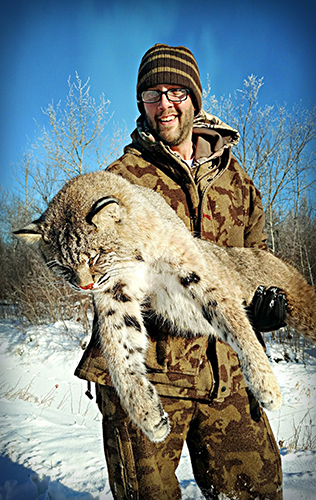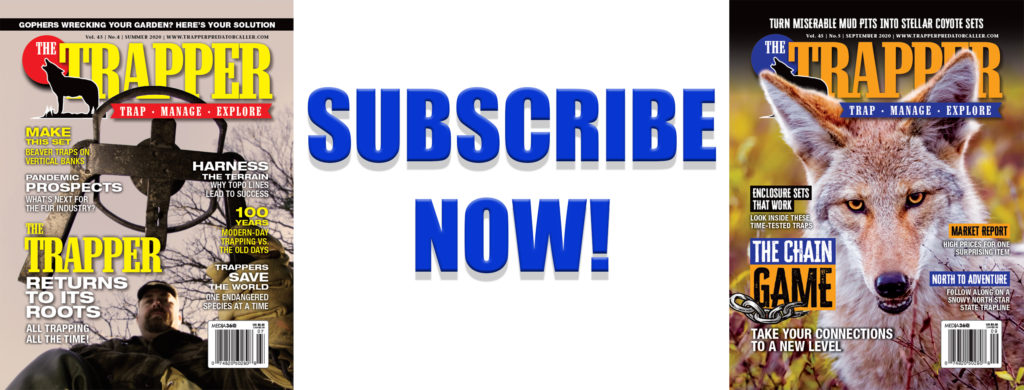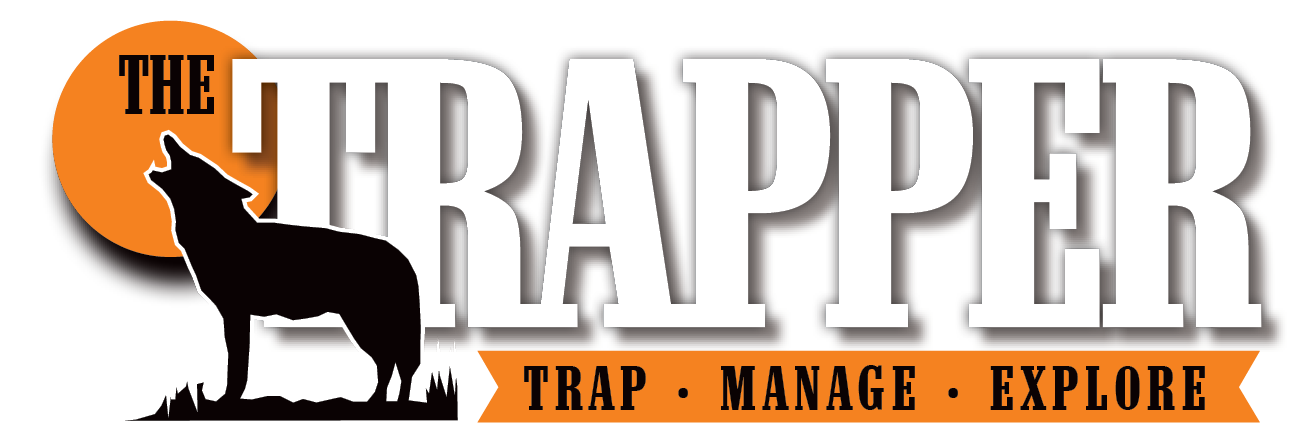When Fur Harvesters Auction in North Bay, Ontario, Canada, held the first wild fur sale of the year on August 30-31, 2020, trappers all over North America finally had some real numbers about what was really happening with wild fur.
For the past few months, really over almost half a year, everything about selling fur was postponed. The world was stalled because of a global coronavirus pandemic, and world travel was either impossible or unpractical. At the end of the day, the impact was that fur sales dropped, everything became dormant, and trappers had to wonder when and where things would start again.
In the meantime, North American Fur Auctions had ceased operations, and the future did not look so good for trappers. You could say that even the most optimistic had to wait to see what would happen, and for the past several months, we were all waiting for something to unfold. The sale results are now publicly available on the Internet (www.furharvesters.com).
First off, it was tough and/or impossible for most of the international buyers to attend, which meant that only Canadian brokers and buyers were present, and Fur Harvesters Auction reported that they had close to 30 buyers attend — which is remarkable considering the confinement issues across the country. Nonetheless, selling fur was difficult overall, and prices paid (when skins were sold) were low, as expected.
Everyone knew going into this sale that nothing was going to be easy. The retail sales have stopped, uncertainty in the economy had stalled luxury purchases, many manufacturers have closed temporarily due to COVID-19 issues (social distancing, risk of contamination, staff safety issues, availability of personnel, etc.). We have also watched the market go down on a steady decline since the record highs of 2013, and last year, one could say that only Western coyotes and Western bobcats sold really well.
Beaver skins overall sold at $12.95 average (all prices in United States dollars), but only 25% of the collection sold. Fur Harvesters Auction receives a lot of high-quality beaver pelts from northern Ontario, and the average is typically higher than normal because of that. So, the realistic beaver average is probably closer to $10 USD — not very appealing for handling 40-pound rodents in mud, ice and snow. The good news is that beavers have castoreum and the low harvest of beavers has resulted in a high demand for castoreum, with prices upwards of $100 USD per pound for top quality castors! If you trap beavers, learn the proper handling of castor glands because this is where the profit is.
Other water species struggled. Muskrats averaged $2.50 USD, whereas wild mink was mainly unsold, which is normal considering the low prices offered for ranch mink. Otter was in the same situation, averaging $15 USD, another direct competitor of ranch mink. When shelves are full of top quality but unsold ranch mink, why bother with wild fur when you can have identical skins numbering in the thousands for the same low price. Low ranch mink cost means it is very hard to sell similar skins, such as wild mink and river otter.
Raccoons are the main furbearer on most traplines in the Lower 48, and raccoons were tough to sell. It is hard to imagine that this will change any time soon — if you absolutely want to trap raccooons, go for size and quality and start no earlier than mid-November. And do not fail to investigate your local meat market, because raccoon meat may easily pay gas expenses when you can receive $3 to $5 per carcass.
Red and gray foxes were tough to sell, and right now that market for red fox skins is obviously on standby. It seems that only foxes of top quality sell good, or those with unusual colorations. Silver fox sold at $27 USD, cross fox averaged $15, white (arctic) fox reached the $40 mark.
Coyotes continued to sell well, but we have now started to see the first signs of this trend slowing down. Western coyotes of best quality (heavy) averaged $77.13 USD, semi-heavies sold for $38.57, and lower quality coyotes (Easterns and Central) were mainly unsold. This is big news in the coyote world because for more than five years now the market would gobble up all of the coyote skins we could produce, often at prices way over what was normal and fair.
Of course, we did not complain, and companies all over the world fought to get the best skins to make the best parka hood liners they could. That fashion craze started to show signs of slowing down, and one of the companies leading this trend recently announced it was going to do a soft exit from the fur market, meaning they would still use coyote fur, but stop purchasing fresh skins, trying instead to recycle skins from old fur garments.
Not sure what impact it will have on their profits or ability to provide nice parkas, but one thing is for sure, one of the big players from the coyote fur world has just left the table — and price drop is the only logical outcome. This may be a gentle sign, but if you are sitting on coyote pelts, sell now, the market has likely started a descent for that item, as well.
Bobcats were also hot during the past few years, especially Western cats with white and nicely spotted bellies. The bidding was slow on them too, probably because many of the international buyers that crave bobcats were not there.
This last point is one that all readers should keep in mind. I do not believe that prices we saw are “normal,” although it is hard for anyone right now to tell what normal is and what normal is not. But, international fur sales thrive when buyers from all over the world come to the same place to bid and compete for the pelts we harvested. With travel restrictions and confinement keeping fur buyers at home, manufacturers at reduced workloads, and the overall economy on standby, we have little hope for a “good normal” to return anytime soon.
I know by the time you read this, many of us will be busy harvesting the next crop of wild fur skins for the upcoming selling season of 2021. Like you, I am making plans to trap again, but I will take new friends along, slow my pace, focus on quality fur and focus on fun times. I also plan to take more pictures, try new sets and experiment more. Focusing on fun is the best safeguard for a successful season. I honestly do not think that the market will recover anytime soon, so you can study prices received at this last big sale (www.furharvesters.com) and expect similar prices for next year. I doubt anything will jump up dramatically, even though many people expect the harvest of furbearers in North America to decline. We have this pandemic mess to get out of, big elections in the United States this fall, and the world needs to find a way to establish the new normal so our beloved industry can get back in shape.



